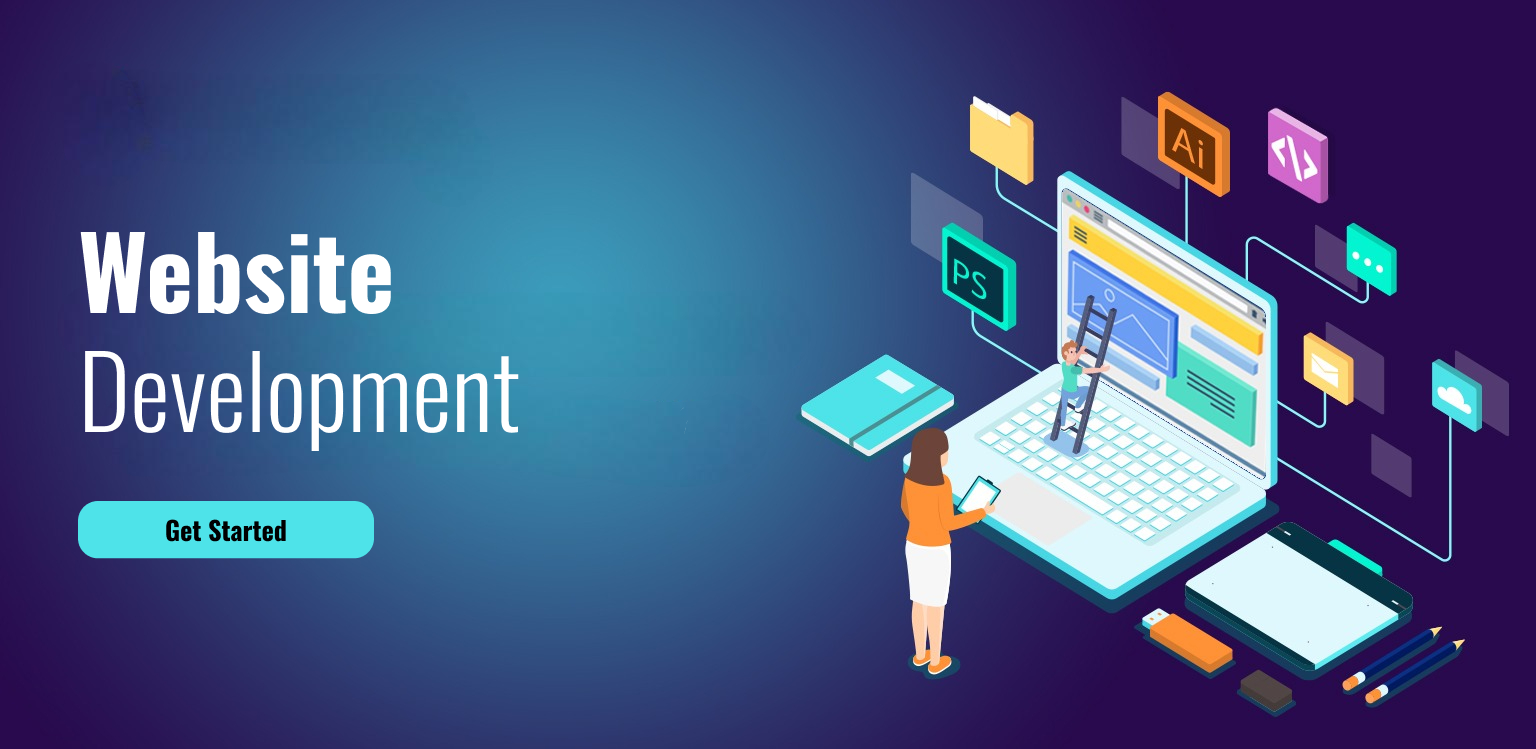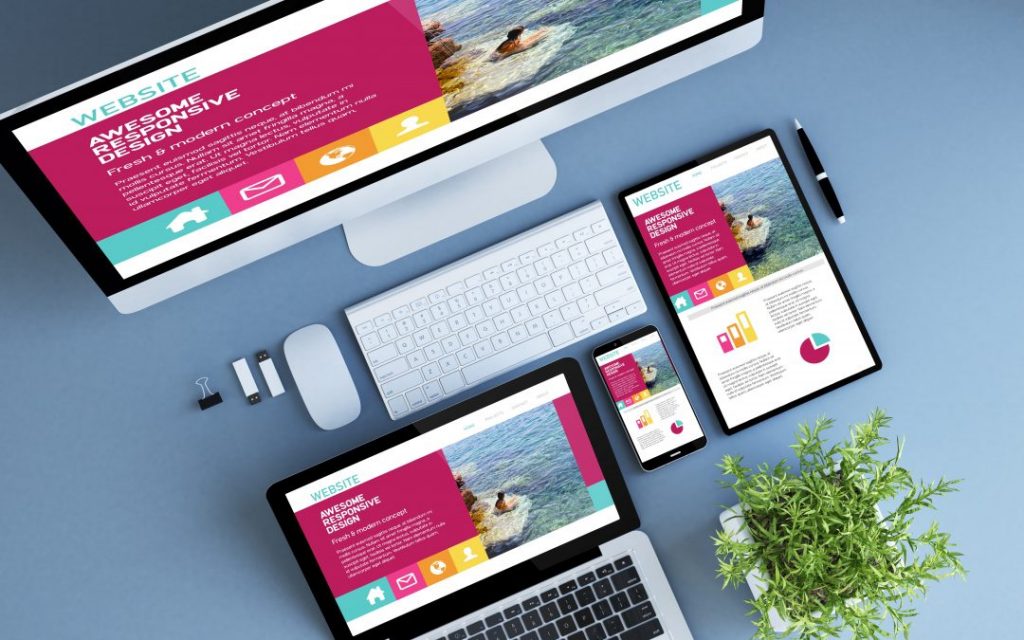The value of web development for creating scalable websites
Uncovering the Uses of Website Design for Enhancing Customer Experience
Website design greatly affects customer experience throughout digital systems. By concentrating on user demands, designers develop sites that are not just visually enticing but accessible and additionally useful. Crucial element such as receptive design and user-friendly navigating play vital duties in boosting usability. However, the difficulty lies in recognizing how these parts connect to satisfy progressing customer expectations. The expedition of these variables discloses understandings that can change electronic involvement.
Recognizing Customer Needs and Expectations
Exactly how can Web developers properly straighten their creations with individual demands and expectations? To accomplish this, developers should take part in complete customer research study to record the choices, actions, and pain factors of their target audience. Utilizing methods such as surveys, meetings, and functionality testing, designers gather valuable understandings that assist their decision-making procedure.
Creating user identities can even more aid in imagining various individual sectors, making certain that style selections resonate with actual individuals. In addition, designers need to focus on intuitive navigating and clear telephone calls to activity, which promote smooth interactions.
The Significance of Responsive Style
As individuals progressively gain access to sites on a variety of tools, receptive layout has actually come to be essential for producing a favorable customer experience. This technique allows websites to adjust flawlessly to different screen dimensions, guaranteeing that material is navigable and conveniently understandable, no matter of whether an individual gets on a desktop, tablet, or smartphone.
Responsive layout boosts functionality by giving a constant experience, decreasing the demand for too much scrolling or zooming. In addition, online search engine favor receptive sites, which can improve a website's presence and reach. This design technique likewise improves advancement initiatives, as it removes the requirement for numerous variations of a website customized to particular tools.
Integrating receptive style not just meets individual expectations however additionally lines up with modern-day Web requirements, cultivating engagement and complete satisfaction. Inevitably, it represents a commitment to access and inclusivity, critical components for any effective on the internet presence.
Producing Intuitive Navigating
An effective website design not only encompasses receptive designs but additionally prioritizes user-friendly navigation, which is essential for directing customers via a web site seamlessly. Instinctive navigation assurances that individuals can conveniently situate details without unnecessary effort. Secret aspects consist of a clear food selection structure, rational categorization of web content, and identifiable symbols or labels.
Consistency in navigation positioning across different web pages cultivates familiarity, enhancing user comfort. Using breadcrumb trails allows customers to track their location within the site, assisting in backtracking and exploration. Furthermore, maximizing navigation for mobile devices is basic, as lots of users gain access to web sites through smartphones and tablet computers.
Including a search bar can in addition enhance the user experience, enabling fast accessibility to certain material. Generally, user-friendly navigation lowers frustration, urges longer site check outs, and ultimately leads to higher individual satisfaction and interaction. By concentrating on navigating style, Web designers can greatly enhance the total customer experience.
Making Use Of Visual Pecking Order Effectively
Efficient website design pivots on the strategic use visual hierarchy, ensuring that customers can easily navigate content and grasp the most vital info at a glimpse. By prioritizing elements based on their value, designers can lead users' focus toward critical areas, such as headings, calls-to-action, and important photos.
Techniques such as dimension, color, comparison, and positioning play crucial roles in developing this power structure. For example, larger message typically represents greater relevance, while contrasting shades can accentuate crucial actions. In addition, constant alignment and spacing help create an arranged format, making it easier for users to process info promptly.
Including imagery tactically can boost understanding and retention of material. When made use of efficiently, a distinct visual power structure not just improves use yet also enriches the overall customer experience, permitting customers to engage meaningfully with discover this the website's objectives.
Enhancing Readability and Access
Aesthetic hierarchy significantly affects how users communicate with a site, yet just as essential is ensuring that content stays readable and available to all audiences. Effective website design uses clear typography, including ideal font sizes, line spacing, and contrast to improve readability. The usage of high-contrast color schemes can help those with visual problems, while larger text dimensions benefit users with checking out problems. In addition, incorporating alt message for images guarantees that people utilizing display readers can access important details.
Developers must also consider the layout and structure of web content, making use of headings and bullet indicate separate large blocks of text. This not only aids skimming but also aids customers with cognitive impairments. Ultimately, focusing on readability and ease of access cultivates an inclusive setting, enabling varied target markets to engage completely with the web site's material (website design). By attending to these elements, Web designers can significantly improve the total user experience
Integrating Engaging Aesthetic Components
Incorporating appealing visual components is necessary for improving customer experience in website design. Color psychology plays a considerable function in affecting individuals' emotions and habits, while interactive graphics can capture focus and encourage expedition. With each other, these aspects produce a more appealing and vibrant on the internet environment.
Significance of Color Psychology
The value of color psychology in website design can not be overemphasized, as it plays an essential role in forming user understandings and actions. Shades stimulate emotions and can affect how individuals interact with a website. For example, blue frequently shares trust and professionalism, making it a popular option for economic institutions. Conversely, red can cause urgency and exhilaration, frequently utilized in sales promotions. Recognizing the mental impacts of shade allows developers to create a cohesive aesthetic experience that resonates with individuals. Furthermore, constant color plans boost brand name identification and acknowledgment, ensuring individuals connect particular colors with certain brand names. Ultimately, thoughtful application of color psychology can significantly boost customer involvement and fulfillment, making it an essential aspect of effective website design.
Making Use Of Interactive Graphics
Engaging individuals with interactive graphics can considerably improve their overall experience on a site. These elements, such as animations, infographics, and clickable visuals, cultivate a much deeper connection between users and the content. By encouraging expedition and engagement, interactive graphics can make intricate information extra absorbable and keep users' focus longer. Additionally, they provide a possibility for individuals to engage with the site in a meaningful way, resulting in enhanced complete satisfaction and a greater probability of returning. It is vital to balance interactivity with use; excessively complex graphics might web development confuse customers. Effectively implemented, interactive graphics can change an easy viewing experience right into an engaging journey, inevitably adding to boosted customer experience and site efficiency.
Continuous Examining and Renovation Approaches
Continuous screening and enhancement strategies work as crucial parts in optimizing website design for user experience. By applying repetitive testing, designers can collect real-time comments on customer interactions, enabling them to determine pain points and locations for improvement - branding. A/B screening, functionality screening, and heat mapping are efficient approaches that provide insights into individual actions, making it possible for informed layout decisions
These techniques motivate a society of continuous refinement, instead than an one-time launch. Web developers can utilize analytics tools to monitor performance metrics, such as bounce prices and conversion prices, which lead necessary adjustments. Routine updates based on customer feedback not just enhance capability yet likewise foster user complete satisfaction and commitment.
Ultimately, constant screening and enhancement develop a receptive website design environment where user experience is focused on, ensuring that the website develops alongside user demands and technical innovations. This aggressive strategy brings about an extra interesting and reliable on the internet visibility.
Often Asked Questions
Exactly How Can Color Psychology Influence Customer Experience in Web Layout?
Color psychology significantly influences customer experience in website go right here design by evoking emotions and leading actions. Various shades can produce organizations, boost readability, and affect user involvement, inevitably forming understandings of a brand or website's functionality.
What Role Does Typography Play in Customer Engagement?
Typography greatly affects customer engagement by improving readability, developing hierarchy, and communicating brand name personality. Effective font style selections can catch attention, stimulate emotions, and guide individuals via material, inevitably improving general communication and complete satisfaction with the internet site.

Exactly How Do Social Differences Affect Website Design Preferences?
Cultural distinctions substantially affect Web style preferences, influencing shade options, layout, navigating, and imagery designs. Recognizing these variants permits designers to develop more engaging and relatable experiences customized to diverse customer backgrounds and assumptions.

What Equipment Can Help Test Customer Experience Effectively?
Various tools, consisting of Google Analytics, Hotjar, and UsabilityHub, properly examination individual experience. These systems offer insights into customer actions, assist in A/B screening, and collect feedback, helping developers make educated decisions to boost total functionality.
Just how Often Should an Internet Site Be Revamped for Optimal Customer Experience?
A website must be upgraded every 2 to 3 years to keep excellent individual experience. Regular updates assure the style stays contemporary, receptive, and lined up with advancing individual demands and technical developments, improving total involvement.
Creating individual identities can further assist in visualizing various individual sections, making certain that style selections resonate with real individuals. As users significantly access sites on a selection of gadgets, receptive style has actually ended up being vital for developing a favorable customer experience. Including engaging visual aspects is vital for boosting customer experience in Web style. Eventually, continual screening and improvement produce a responsive Web design atmosphere where individual experience is prioritized, making certain that the site advances together with user requirements and technical improvements. Color psychology greatly affects customer experience in Web design by leading and stimulating feelings habits.